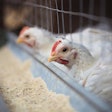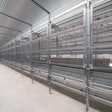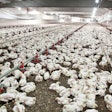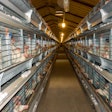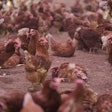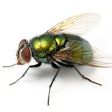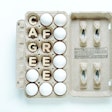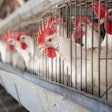Preliminary analysis of the Coalition for Sustainable Egg Supply first flock research results were presented recently at the group’s annual meeting in Minneapolis. The quality of the eggs was assessed shortly after they were laid using multiple parameters, which were found not to be impacted by hen housing system.
Eggs from the three systems were further assessed at four, six and 12 weeks of cold storage to determine if the housing system impacted the rate of egg quality decline. Findings showed that hen housing system did not impact the rate of egg quality decline.
Immune function
Researchers also looked at the effect of housing type on the hens’ immune systems and vaccination effectiveness. An effective immune response can result in a better resistance to invasion and colonization of Salmonella into tissues including ovary and eggs. Two methods were used to measure antibody levels of each flock and analyzed to determine immune status. Antibody response in hens did not differ between housing systems; however, significant seasonal differences were noted.
Worker safety and health
Among the three types of housing studied, the cage-free aviary system had consistently higher inhalable particle and inhalable endotoxins concentrations in the spring, summer and winter. Workers who had been in the aviary system had fewer changes in lung function between the beginning and end of work shifts than those in other systems, though not significantly so.
Many of these issues can be managed by workers wearing an approved respiratory mask (masks were available to all workers during the study). Less frequent mask use is significantly associated with lower lung function. Average mask use was higher for workers in aviary housing, which may have protected them from greater respiratory consequences than had they not worn them.
Understanding that specific job tasks can have an impact on worker health and safety, ergonomics were also evaluated, assessing the movements necessary to perform job functions in each of the barns and identifying possible risks. In the conventional and enriched colony systems, the loading and unloading of cages during population and depopulation requires extreme body positions, including squatting for an extended time. In the aviary system, gathering eggs that had been laid on the floor also requires extreme body positions, while crawling and lying on the floor exposes the worker to potential respiratory hazards and infection hazards to the hands and the knees.
Other measurements
The Coalition for Sustainable Egg Supply is a group of egg suppliers, food manufacturers, research institutions, non-governmental organizations, restaurant, foodservice and retail food companies who are collaborating on a commercial-scale study of housing alternatives for U.S. egg-laying hens. This research project is studying five aspects of sustainable egg production in conventional, enriched colony and cage-free aviary housing systems. Preliminary research results for the Animal Health and Well-Being, Food Affordability and Environment aspects of the research were released in 2012.
Researchers will finalize analysis of the research data on behalf of the Coalition in 2014, with a final report available in 2015.







